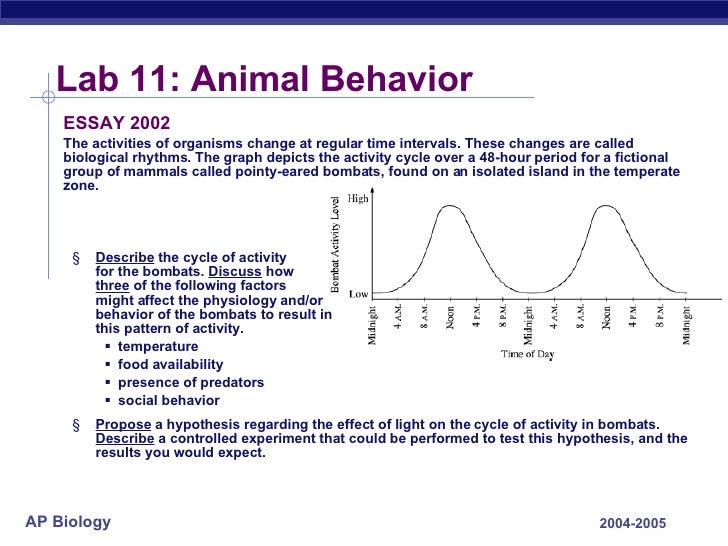Ap Biology Lab Manual Lab 11 Animal Behavior


Ap Biology Lab Manual Pdf

AP Biology Lab 11: Pre-Lab Animal Behavior Background Perhaps one of the most difficult fields of biology to study is ethology, the study of animal behavior. Observation of a behavior is simple; interpreting what has been observed requires more effort; therefore, more than any other division of research in biology, ethology calls for patience, objectivity, and imagination. It would also be an excellent final lab activity to draw together many of the concepts and big ideas and science practices from the AP Biology Curriculum Framework. The investigation pulls together topics such as genetics, animal behavior, development, plant and animal structures from cells to organs, cell communication, fermentation,. Lab 11 Animal Behavior Introduction: Ethology is the study of animal behavior. An animal’s behavior is its response to sensory input. There are three types of behaviors: orientation, agonistic, and mating. Orientation behaviors take the animal to its most favorable environment. Taxis is when an animal moves toward or away from a stimulus.
Virtual Lab Notebook: Research Methods Midterm > AP Lab 11: Animal Behavior
|
